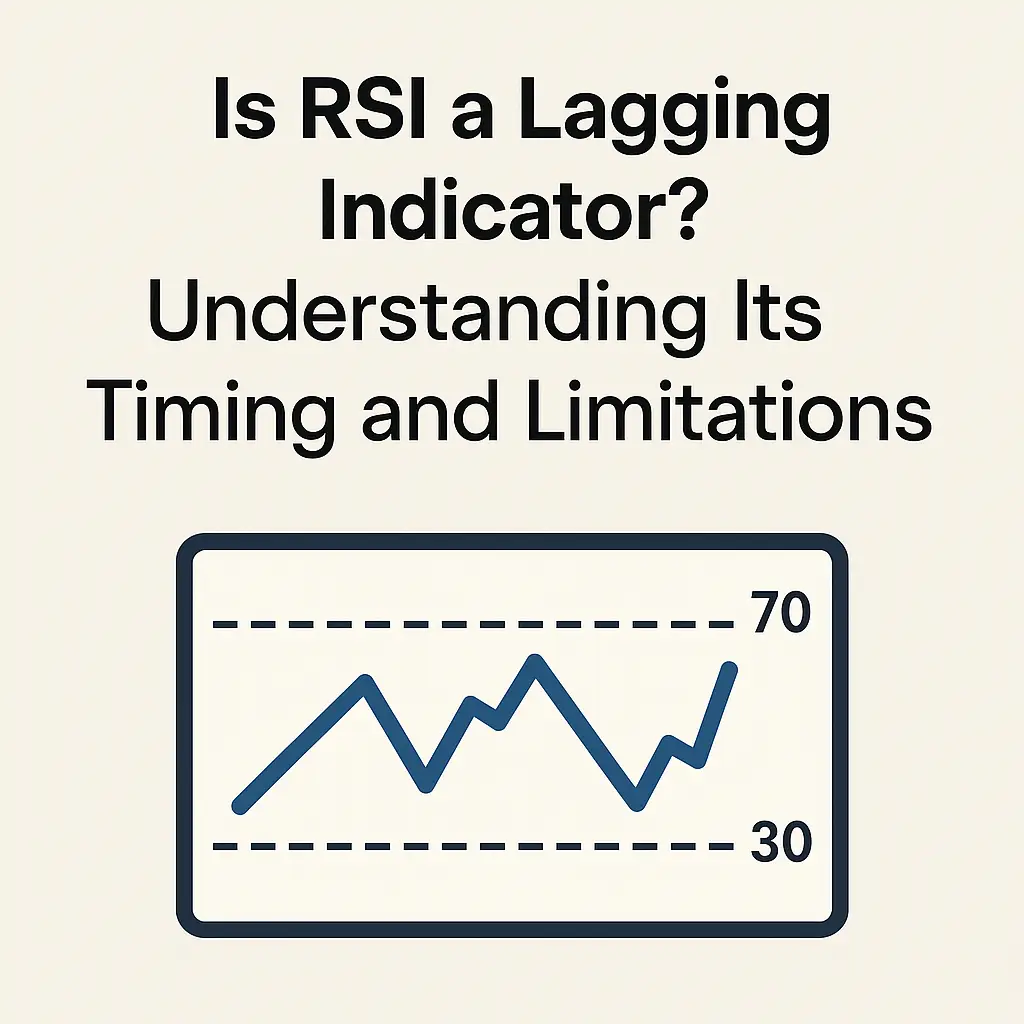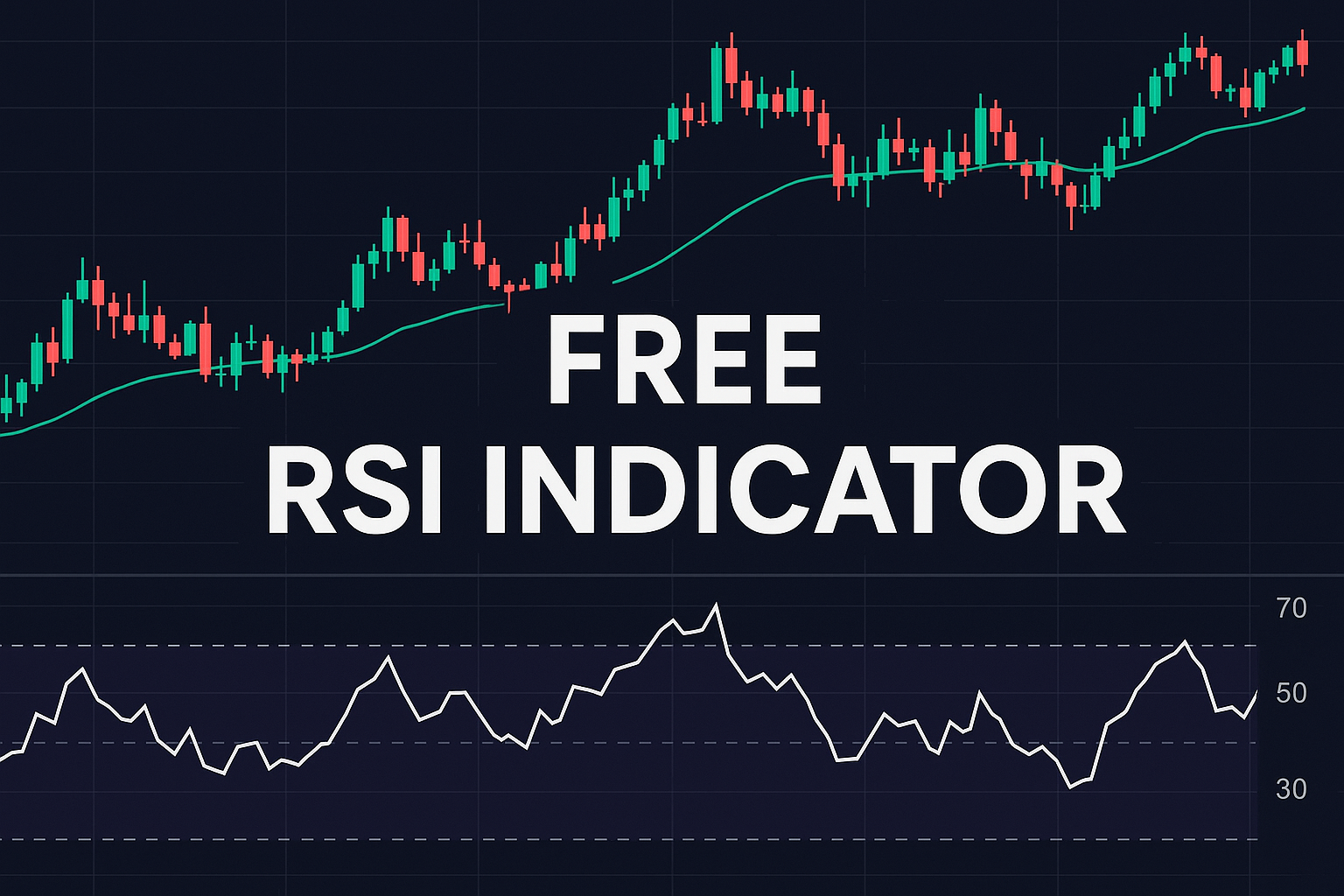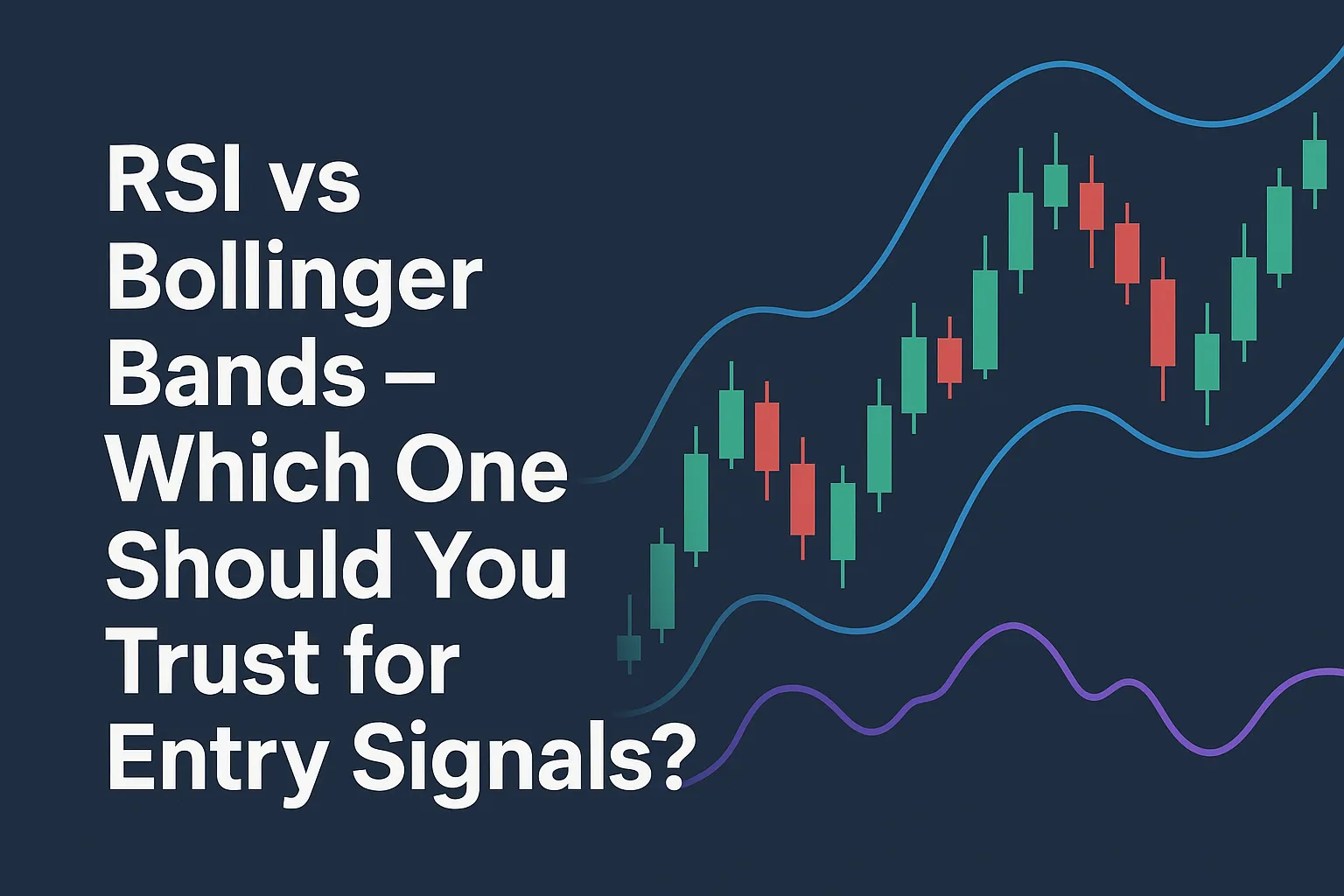RSI is one of the most used tools in technical analysis — but is it a lagging indicator or can it predict price moves ahead of time?
In this guide, we’ll explain what type of indicator RSI really is, how it works, and what you need to know about its strengths and limitations.
What is a Lagging Indicator?
A lagging indicator is based on past price data. It reacts after a market move has occurred.
It helps confirm a trend or reversal, but does not predict them in advance.
Is RSI a Lagging Indicator?
✅ Yes — RSI is a lagging indicator.
It uses past price action (usually the last 14 periods) to calculate whether an asset is overbought or oversold.
The formula takes average gains and losses from previous candles — so by definition, it reacts to what has already happened.
Why RSI Being Lagging Is Not a Bad Thing
Many traders think “lagging” means “useless.” But that’s not true.
Here’s why RSI still works:
- It smooths out market noise
- Confirms real momentum shifts
- Helps you avoid premature trades
- Works well with other tools like trendlines and support/resistance
When RSI Lags Too Much
Like all lagging indicators, RSI has limitations:
- In strong trending markets, RSI can stay overbought/oversold for a long time
- You may miss early entries if relying only on RSI
- Divergence signals may appear after the actual trend change
How to Use RSI Effectively Despite Lag
- Combine it with price action or chart patterns
- Use support/resistance zones for confirmation
- Look for divergence setups when price and RSI move in opposite directions
- Adjust RSI periods (e.g., from 14 to 7) for faster signals
Conclusion
RSI is a lagging indicator — and that’s okay. It’s not designed to predict the future but to confirm real momentum changes. Used correctly, it becomes a valuable part of any trader’s toolkit.
🔍 FAQs
Is RSI a leading indicator?
No — RSI uses past data, so it lags behind current price action.
Can RSI predict reversals?
Not directly. But it helps spot high-probability zones where reversals could occur.
Is RSI reliable?
Yes — when used with confirmation methods like divergence or support/resistance.





